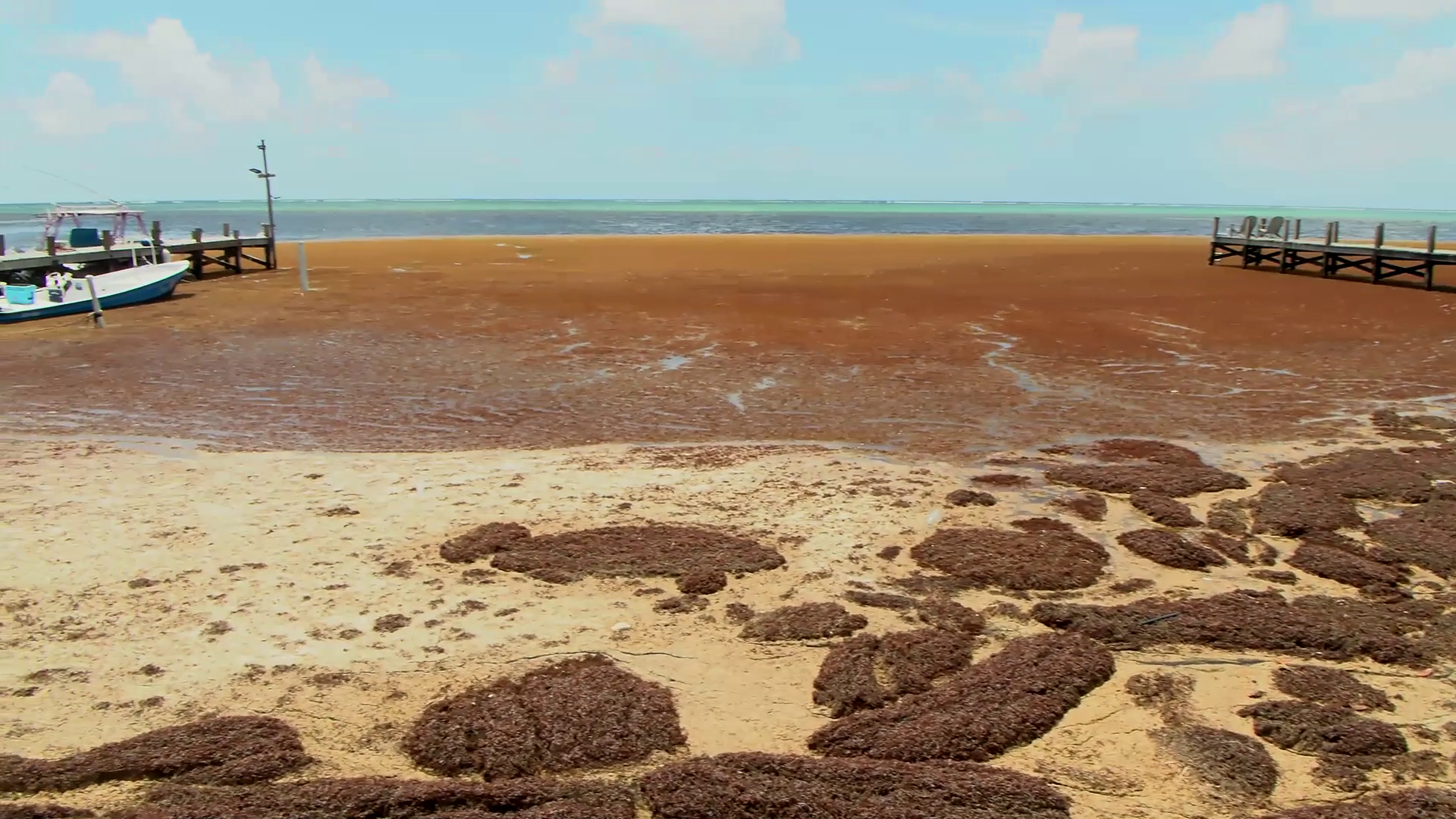It’s piling up fast and it’s not going away. San Pedro is now under a sargassum emergency. The town council says they’re fighting a losing battle, only managing to clear a fraction of the seaweed before it comes right back. With limited resources and mounting pressure from frustrated businesses and residents, the call is out for everyone to pitch in. The stench is strong, the beaches are brown, and marine life is dying. So, what’s the way forward? News Five’s Paul Lopez went to the island to find out more. Here’s his report.
It’s a seaweed invasion and it’s getting worse by the day. Ambergris Caye is now under a sargassum emergency as thick mats of the brown algae continue to blanket the island’s once-pristine shores. Crews with shovels and wheelbarrows are working around the clock, but the seaweed just keeps coming. The stench is overwhelming, the beaches are buried, and coastal businesses, especially those over the water, are feeling the heat as guests complain about the view and the smell.
Franklin Mercado, Bartender, Wayo’s Beach Bar
“It affects the business as a whole. We have a lot of people coming in everyday. And one of the most important thing for us is our beach front view, our ocean view and without that ocean view, you don’t really see the ocean because everything is covered with that nasty seas grass. It affects us as a business where we have people avoiding come too close to the beachside, because of the smell being two strong and it just unbearable.”
“A normal day on the beach in San Pedro looks like sitting down, enjoying the sun and the view. But that is not the case today because sargassum has taken over the beach for miles.”
Luis Gomez, San Pedro Town Resident
“All around here in the front area of the sea, you will find bone fish, small snappers and stuff like that. So, the bone fish, they call them schools. So every time I come and the sargassum is a lot you will see a bone fish floating there and another floating there. Surprisingly even big fish I have seen, like big jacks, they float up and get bloated and it is destroying anything that is in the front, grass, fish, jacks, crabs, you name it, it is dying because they don’t have any oxygen. And the sargassum let go a toxin that they cannot survive in the environment.”
On the island of Ambergris Caye, the fight against sargassum feels never-ending. Every day, a small team made up of local businesses and the San Pedro Town Council works tirelessly to clear the beaches, but the seaweed just keeps coming back. Now, with the situation worsening, the Mayor’s Science Advisor, Valentine Rosado, is sounding the alarm. He says it’s time for an all-hands-on-deck approach. That means more people, more resources, and a united community effort to tackle what’s now being called a sargassum emergency.
Valentine Rosado, Science Advisor, Office of the Mayor
“If we get people to come and assist, near their homes or just volunteers, all we need to do is to take it out of the water, even if they don’t have the ability to take it somewhere else, put it high up on the beach so that when it dries it does not smell. That is the priority and that is what we are asking people to assist with, because right now the council is removing a hundred and thirty-six tons of sargassum a week.”
Miguel Alamilla, Resident, San Pedro Town
“We are tackling the problem when it drift to our shoreline and how effect we are depends on who you talk to, but it is difficult given the amount we have. It is very difficult. Even here we have to have a collective approach.”
Paul Lopez
“Do you that if business and community members come together, put their resources together that they can make a dent in this?”
“Of course, it is required given the extend of the problem. That is what we need.”
Nicole McRay, Co-Owner, Fresh Express Bakery
“I mean we can all volunteer to help out a little bit, if not volunteer some money to help put up for this, because it does, if affects everybody in the neighborhood and on the island.”
It just won’t stop. Day after day, the sargassum keeps rolling in—and despite constant cleanup efforts, the beaches of Ambergris Caye are still buried under the brown tide. The smell? Overwhelming. The view? Far from paradise. Locals and tourists alike are trying to go about their day, but the truth is, if this keeps up, the entire island’s tourism industry could take a serious hit. Reporting for News Five, I am Paul Lopez.
